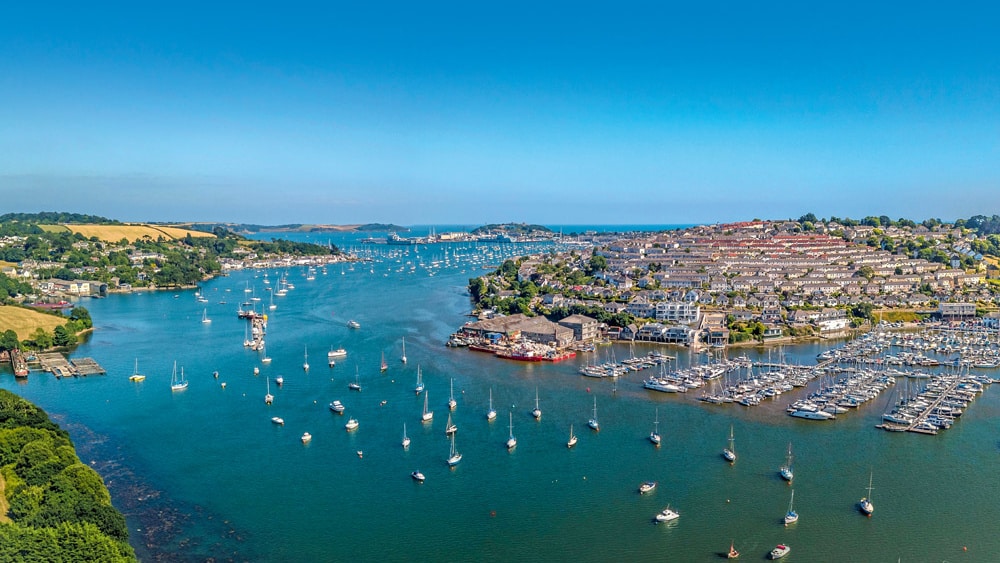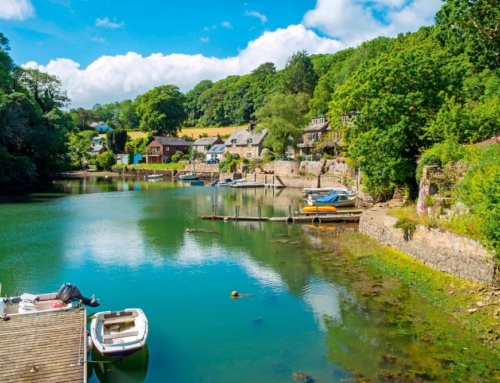Where in Britain can you find the deepest natural harbour in Europe, the first and last port in the UK and an intimacy with nature that inspired some of our most-loved literary works? Mark Featherstone and Jo Moon head west to Falmouth to discover a harbour with hidden depths.
The thriving Cornish port of Falmouth and its associated Fal Estuary not only represent a gateway to the Atlantic and the county’s north coast shores, but it also overlooks the beautiful Roseland Peninsula with its subtropical flora and delightful, secluded granite and limestone coves. The town itself, being steeped in history, boasts a wonderful maritime heritage, and as any Cornishman will tell you, it’s a place that possesses a coastal charm to rival any European destination!
The Fal Estuary, from which the town takes its name, likewise offers many miles of sheltered tidal water overlooked by ancient oak woodland. So great are the Fal’s green, slow-moving estuary waterways that one could likely enjoy a lifetime of boating without ever having to venture out to sea beyond the mouth’s famous whitewashed lighthouse of St Anthony.
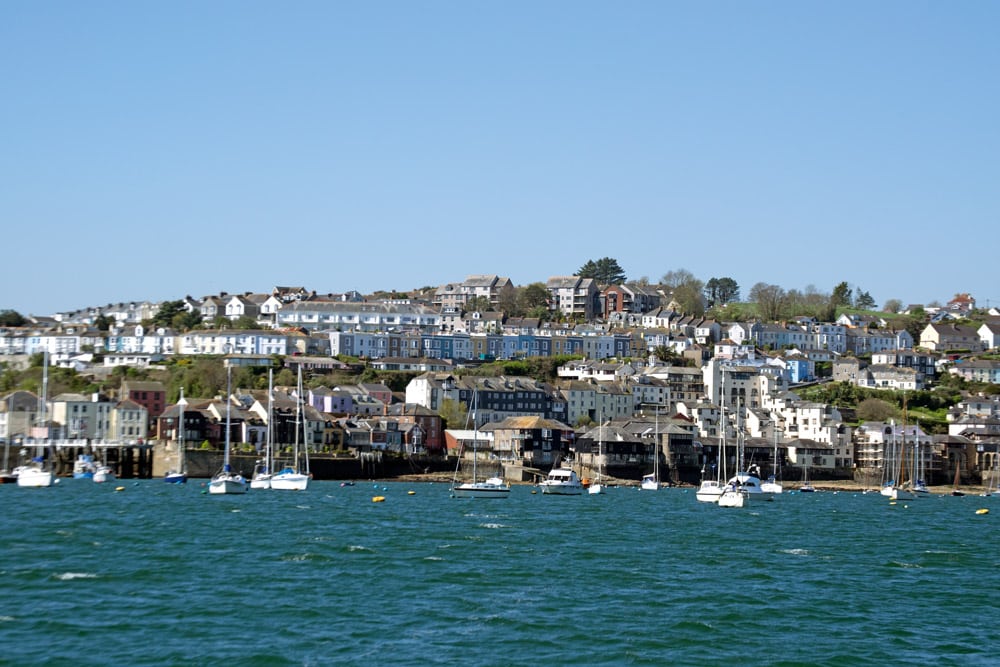
As well as being the most marvellous place to explore, the river provides an important habitat for birds and wildlife.
Idyllic location
The energetic town of Falmouth is flanked by glorious granite cliffs, pretty coves and wide beaches of soft white sand. Set in an Area of Outstanding Natural Beauty, the town lies right on the Fal’s river edge, a watercourse that flows from St Austell in the north-east before entering the main estuary and the river valley, which it is thought was drowned originally by melting glaciers. The open bay or estuary mouth is also known as the ‘Carrick Roads’ and reaches depths of up to 34 metres. In fact, it constitutes the deepest harbour in Europe and the third-largest natural harbour in the world! Not surprisingly, the area is a haven for seafarers, combining sheltered waters and an extraordinarily beautiful coastline that begs to be discovered. Often referred to as the ‘first and last’ port for Atlantic crossings, Falmouth Harbour has played host to many round-the-world record-breaking voyages, including the Volvo Ocean Race. Sir Robin Knox-Johnston’s non-stop, single-handed circumnavigation of the world aboard Gypsy Moth in 1968 and Dame Ellen MacArthur’s round-the-world record in 2007 both began and finished in this historic port and its estuary waters. Home to the National Maritime Museum Cornwall and many notable heritage sites, the port draws visitors all year round to its vibrant festivals and events, including the famous Tall Ships Race, which returns this year.
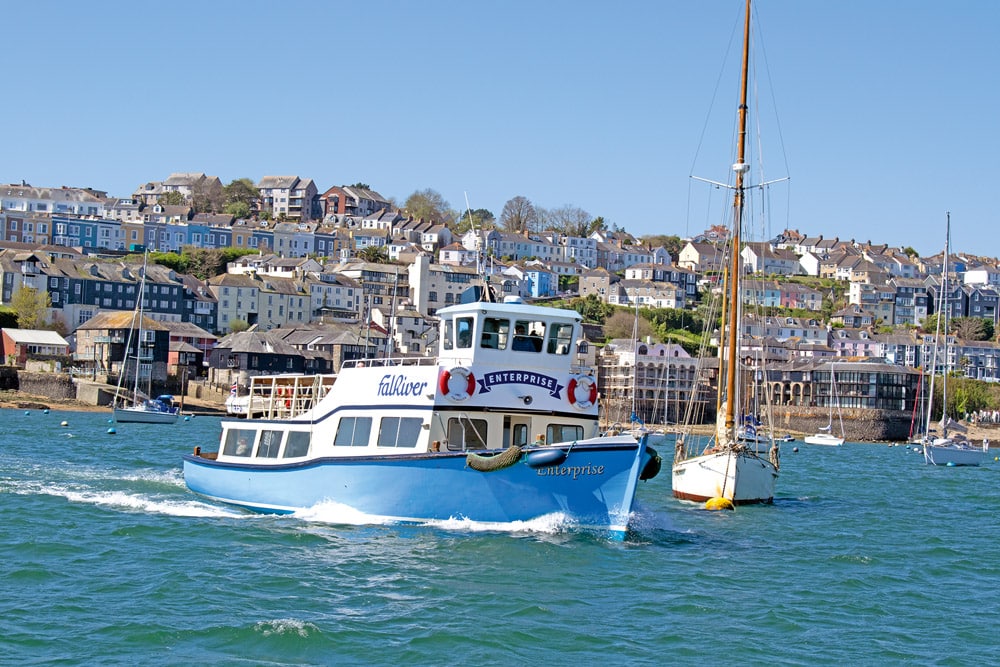
Fal River Ferries.

St. Mawes gig rower’s club house preserving the harbour’s commercial heritage.
Perfect for powerboaters
Falmouth Haven Marina is operated by Falmouth Harbour, a Trust Port whose duties are to maintain an organisation of quality and excellence, and this ethos really does genuinely extend to the welcome offered to powerboaters. I met with RIB owner Miles Carden, Falmouth Harbour CEO, an individual who is keen to promote the visitor offering in the marina. It was refreshing to hear his ‘can do’ attitude to motorboat visitors, and I came away from our discussion with the impression that nothing’s too much trouble for the harbour team here. They welcome powerboat clubs and rallies too and are capable of accommodating up to 100 vessels of under 16m at any one time if so required. For boats over 16m LOA, there are swinging moorings, and for even larger private vessels, the harbour can provide commercial moorings but make them available at leisure boat rates. Especially outside event periods, Miles Carden also mentioned that it was rare not to find space for sub-10m craft. His hot tips, though, included visiting in the shoulder months when the weather is kindly and the town is less busy. He also reminded us that during January in particular, the estuary can not only teem with pods of feeding dolphin, but also prove a hot spot for multitudinous flocks of gannet that dive these bounteous waters during winter.
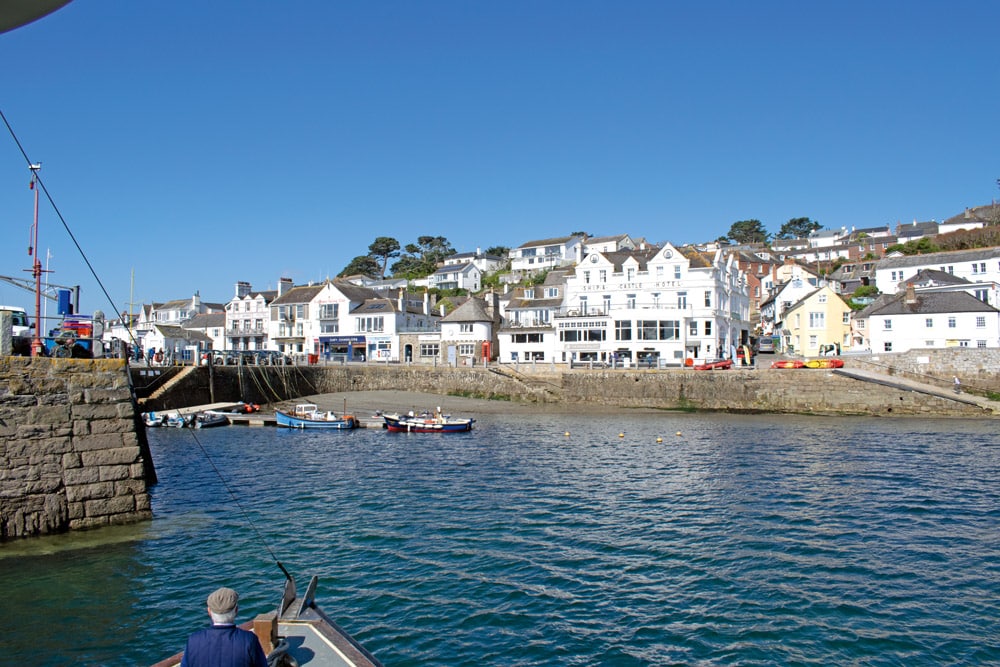
Boats under 5 meters can use the pontoons in the pretty inner harbour of St.Mawes.
Approaches
The approach to the harbour, which is accessible in all weather, is well sheltered, with an entrance clearly marked by Pendennis Castle to the west and the white tower of the St Anthony Head lighthouse to the east. Beware of Black Rock, though, just west of the centreline, which uncovers at low tide and is topped with a black beacon. If approaching from the west, it is best to give the Manacles reef a wide berth by keeping east of the cardinal buoy. And an additional word of caution: large commercial vessels are regularly on the move in the inner harbour and within the outer waters of the bay, so maintain a good watch at all times. Shipping movements are issued by the harbour master and you do need to make yourself aware of these either by checking on the noticeboard, asking the harbour team or checking the website (if approaching at night, contact the pilots on Channel 9 for up-to-date information). As you head into the sheltered waters of the inner harbour, you’ll find Falmouth Haven located to the south-west. Flanked by Discovery Quay, with its numerous bars, restaurants and supermarket on one side and the winding main street on the other, the marina is ideally placed for overnight, weekend or even week-long stays.
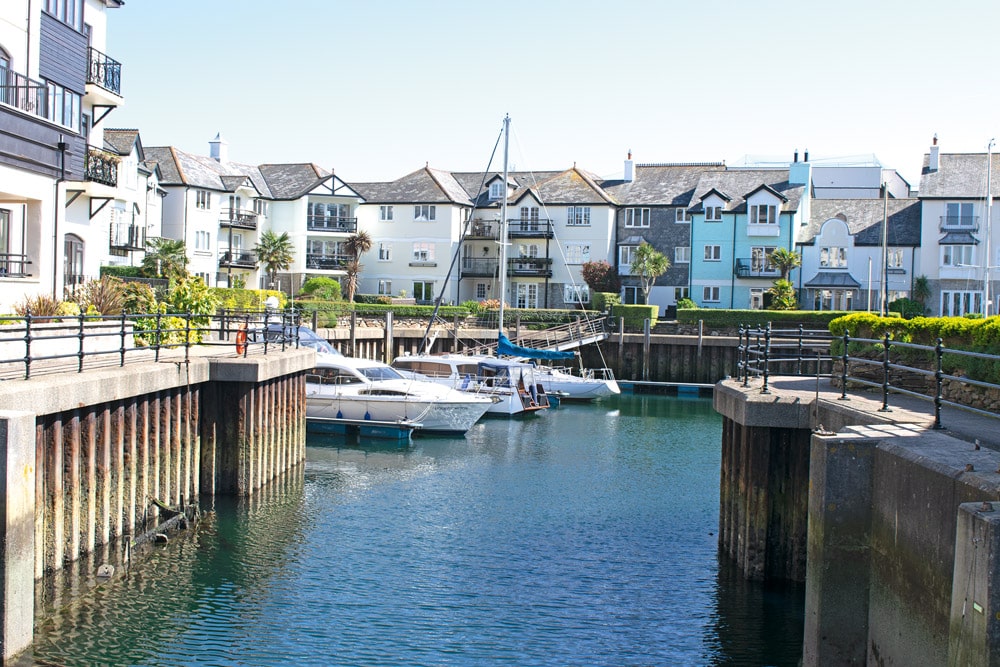
Pendennis Marina inner dock.
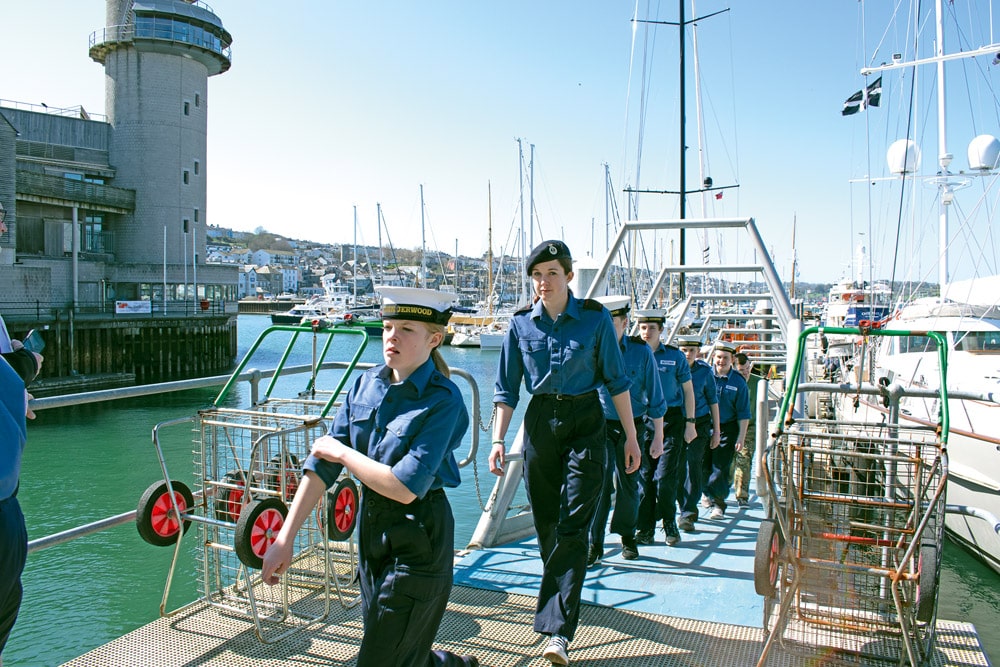
Pendennis Marina next to Discovery Quay is an excellent alternative – even the Navy use it!
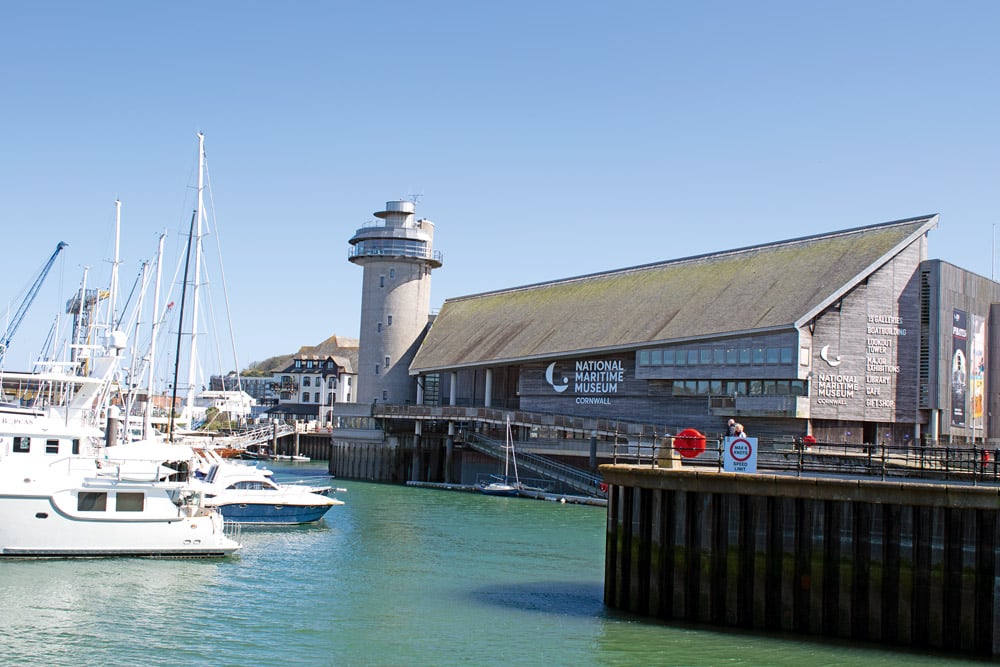
Maritime Museum.
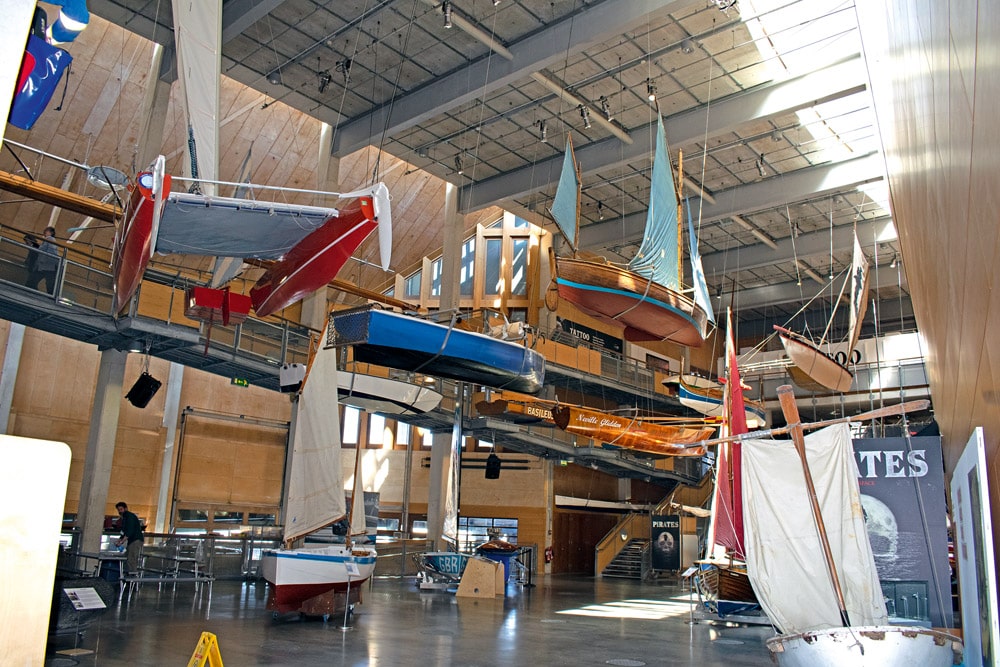
15 floors of exhibitions in the Maritime Museum.
Dynnargh dhis! A Cornish Welcome
Falmouth is an energetic port with a huge range of activities, both water and land based, all with a rich maritime history. During our recce, Jo and I headed to the aptly named Discovery Quay, home to a custom-built museum bearing its name that celebrates its 20th birthday this year. It is also home to the National Small Boat Collection, and the centre’s 15 galleries chart the history of boats and boating over the millennia. Throughout 2023 and 2024, Discovery Quay is also staging a pirate exhibition, with the intention of educating visitors to the true realities of piracy on the high seas. But be warned, its aim is not to present pirates as ‘swashbuckling’ romantics. On the contrary, it’s pretty brutal fare.
Taking a stroll along Discovery Quay’s high street, we perused its attractive array of shops, restaurants and galleries, set within the historical architecture of the street’s 18th- and 19th-century frontage. Falmouth’s heritage definitely provides it with a ‘world outlook’ – a quality we saw reflected in the wide variety of eating houses found in the town. In addition, throughout the coming 2023 summer months, Custom House Quay is set to play host to the exciting new ‘Grub Hub’ – a showcase of independent ‘pop-up’ food trade outlets. On the occasion of our recent visit, we indulged in a splendid lunch at the superb waterfront brasserie INDIDOG, which sits on the Grade II listed harbour wall of Fish Strand Quay. With uninterrupted views of the busy River Fal, I can highly recommend a visit to this friendly, independent restaurant.
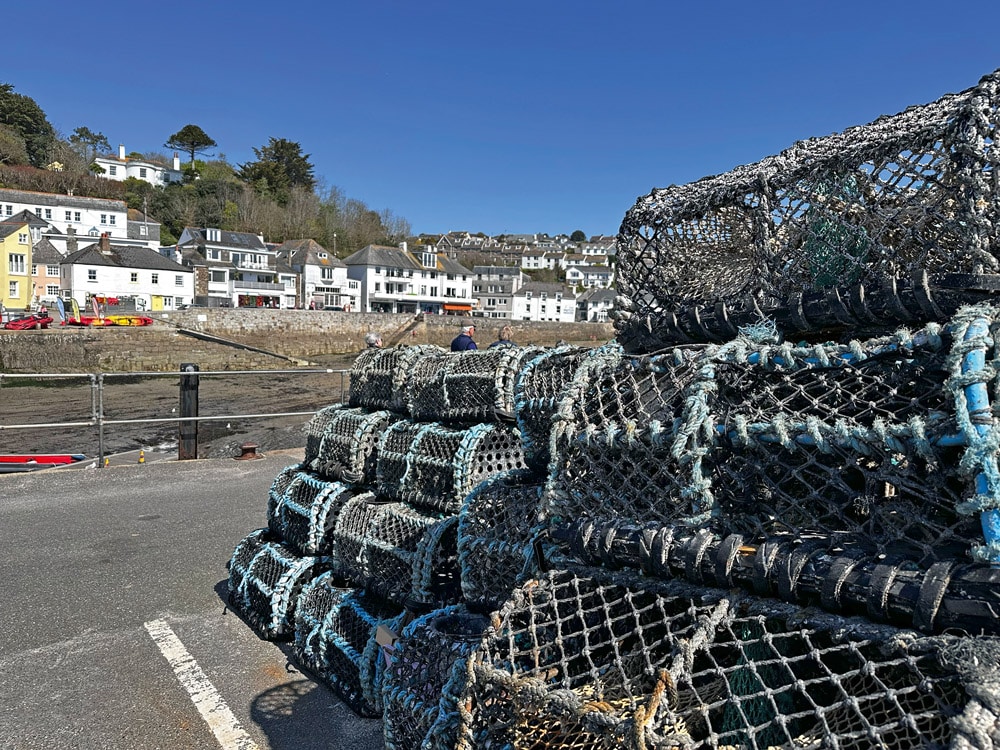
Fisherman drying their pots in the sun.
Fal River Links is a veritable network of ferries, boats, buses and trains, all of which support the concept of visiting the area car-free. As well as discovering its waterways by boat, of course, if you want to explore ashore, it’s a great idea to purchase a ‘Fal Mussel Card’ for any hop-on/hop-off travel you wish to undertake.
St Mawes
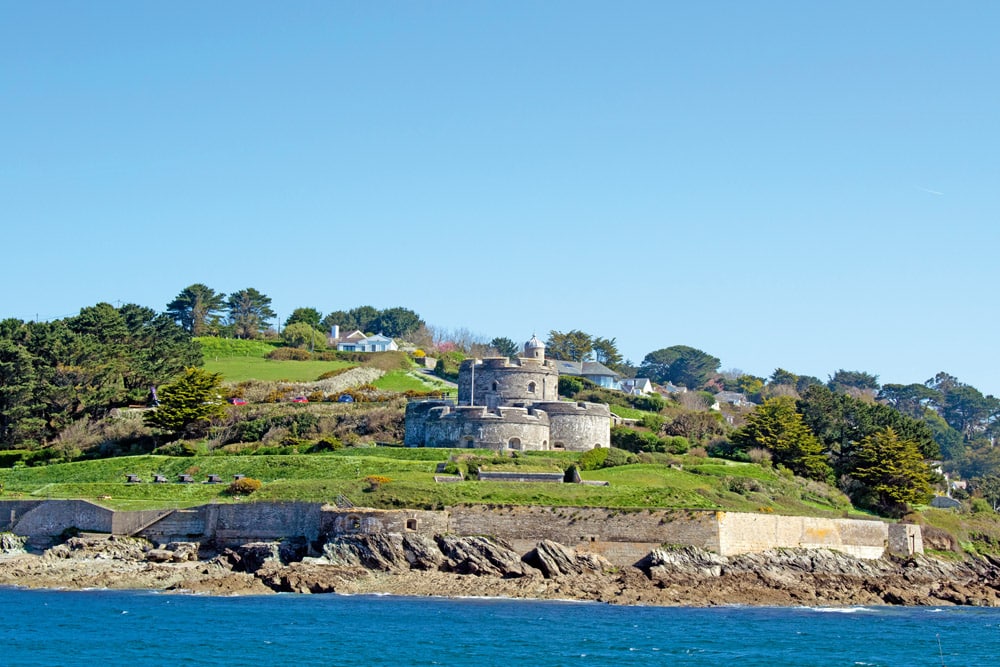
St. Mawes Castle
On the afternoon of our visit, we cruised over to the incredibly picturesque fishing village of St Mawes. Located on the opposite side of the estuary to Falmouth, this popular yachtsman’s haunt, which dries at low springs, is accessible on a neap tide or one and a half hours either side of spring tides. Boats under 5m LOA can use the pontoon in the inner harbour from April to October, and larger boats can make use of the buoys located outside the harbour too, then take the water taxi if they so wish. The friendly and helpful harbour master here recommends emailing to book ahead, but if you do take your chances on the day, it’s best to call first, as it can be busy with small commercial vessels, whereupon you’ll be directed to a visitor’s berth.
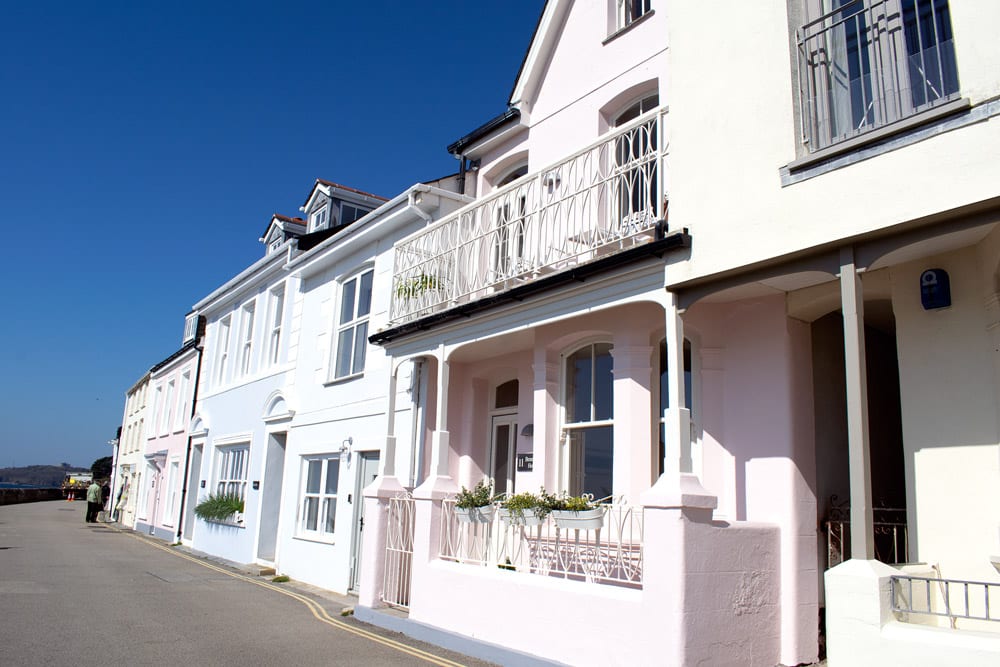
Sunwashed cottages look out across St Mawes harbour
St Mawes lies at end of the Roseland Peninsula and is well guarded by the best preserved of Henry VIII’s coastal fortresses, St Mawes Castle, which sits majestically at the foot of the Peninsula’s gentle green hills. Jo and I had a delightful stroll along the front here, admiring the whitewashed fishermen’s cottages along the way, all freshly painted and bright in the afternoon sun. The village has three hotels and two pubs in all. We stopped for an outside afternoon cup of tea at the St Mawes Hotel, which not only enjoys a prime view of the water, but even has its own cinema! Then, before heading home, we bought some delicious fresh crab from the fish cabin on the quay, caught that very morning and sold by the charming Angie, whose husband supplies the fish fresh from his daily catch.

Fish fresh from the boat in St Mawes.
Estuary explorations
St Mawes is situated at the mouth of the Percuil River, an unspoiled, navigable branch of the Fal Estuary, and it is just one of six tributaries that flow into the Carrick Roads. Mile after mile of dense oak wood lines the riverbanks, with the Percuil having sufficient depth to be navigable for some 4 miles as far as Truro, the Duchy of Cornwall’s capital. Along the entire reach of this incredible waterway, there are some 4,000 moorings. So, from the idyllic Mylor Marina up to the small port of Restronguet Creek, you certainly won’t be short of places to stay! Paddleboards and small tenders are a must-have for exploring the dozens of unspoiled creeks and intimate inlets concealed along this breathtakingly beautiful river and estuary network.
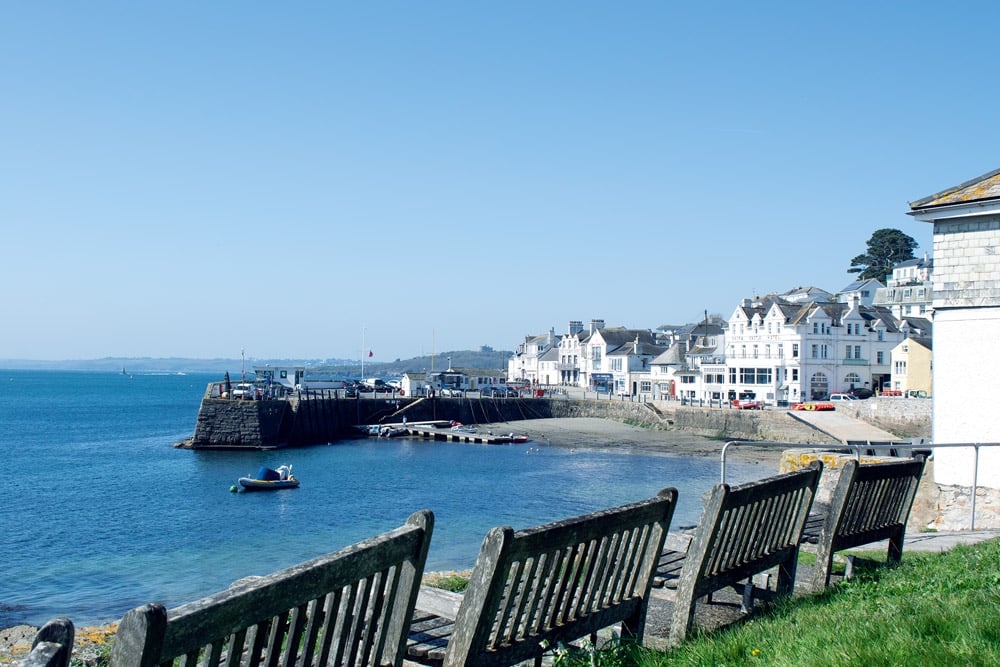
Sit awhile and take in this stunning scenery.
As well as being the most marvellous place to explore, the river provides an important habitat for birds and wildlife. There must be few places where you can expect to see such diversity – from dolphins, seals and basking sharks close to the mouth of the estuary to fallow deer, peregrines and buzzards living among the woods on the upper courses. The Duchy’s shorelines are a haven for rockpooling too, and one of the largest flocks of black-necked grebes in the UK lives here. If you’re interested in learning more about the region’s flora and fauna, the Cornwall Wildlife Trust is an excellent resource for information on the estuary’s ancient woodlands and its natural wonders. It will come as no surprise that much of Falmouth Harbour’s waters falls within the Fal and Helford Special Area of Conservation, which includes important salt marsh meadows, reefs and sandbanks.
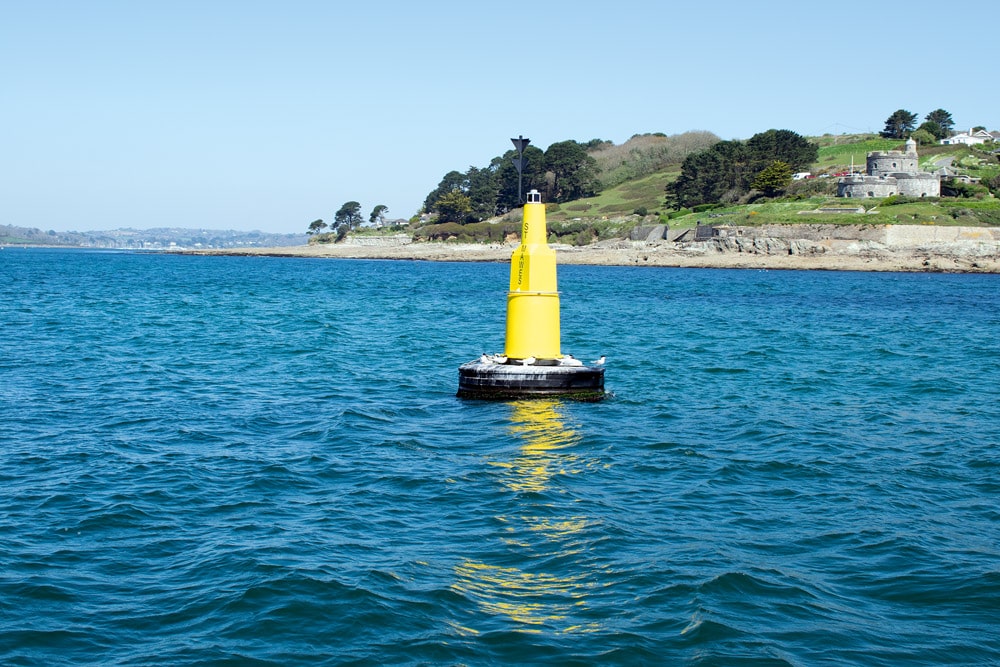
The approach to St Mawes.
Visit again and again
There really is so much to explore in and around Falmouth that you’ll likely need more than one visit. It’s a friendly town, and its outlying villages and hamlets are equally so, and of course, a boat allows you the privilege of seeing and experiencing so much more than you otherwise would if you were confined to the shore alone. We haven’t even touched on the neighbouring beauty that is the Helford River, which could be the subject of another distinct article in its own right. But suffice to say, it’s one of the most captivating rivers in the whole of the British Isles, if not the most romantic and inspiring. What is certain is that the Fal and all its associated waterways have been, and continue to be, a place of discovery for generations of writers, artists, seafarers and adventurers – a place your friends and family won’t fail to be inspired and charmed by whenever you choose to visit.
Exploring the estuary
Extending 4 miles from Black Rock to Turnaware Point at the estuary’s head, the latter being known for its association with the D-Day landings, there are numerous places to stop off and explore or simply to anchor up and take in the natural majesty of the estuary. (I also recommend reading my fellow PBR writer Greg Copp’s article, published in this magazine in December 2021, for additional information on the many special places awaiting your discovery in and around the Fal.)
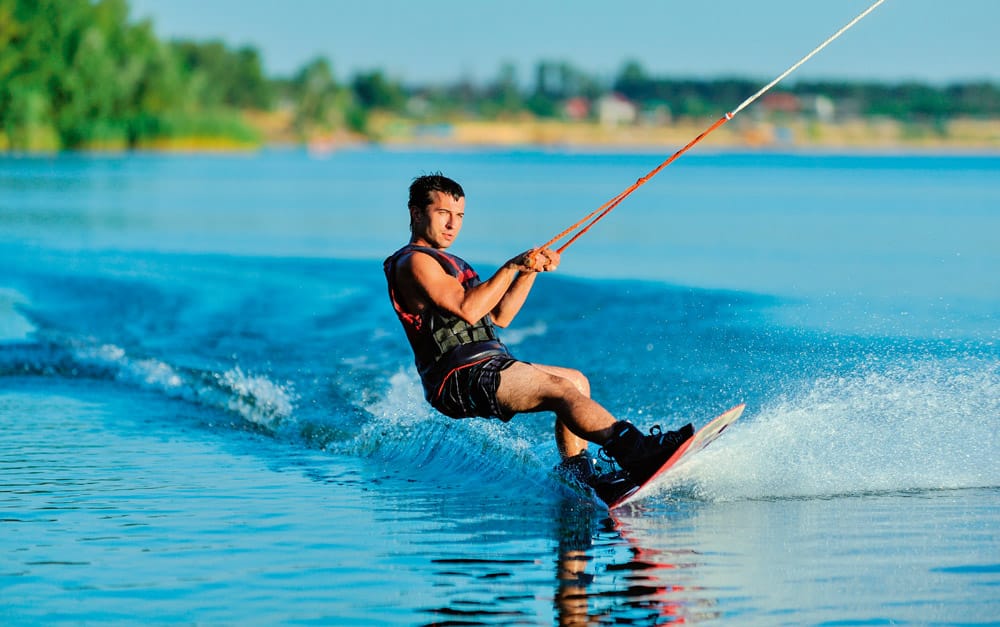
You can water ski in the area. © Mark Studio/Shutterstock
Mylor
With a full-service boatyard and excellent facilities, Mylor is a great marina with over 400 berths and an efficient harbour team who are on hand all year round to catch a line or guide you to a berth. The visitor pontoon is located on the eastern arm of the horseshoe-shaped marina and offers all-tides access for vessels with up to a 2m draught. Visitors are welcome, although it’s best to call ahead on Channel 37 or 80. Both diesel and petrol are available here, and a well-stocked chandlery completes the picture. It’s also handy to know that the slipway is public, so it’s free to use, and there’s plenty of trailer parking at the marina complex too. This facility is a great base for exploring the upper reaches of the estuary, particularly the 13th-century Pandora Inn at Restronguet, which has its own visitors’ pontoon. St Just in Roseland, which has the most quintessentially pretty church and the National Trust’s Trelissick Gardens, is likewise well worth a visit.

Beaches
Loe Beach, at the northerly end of the Carrick Roads, is the best place to anchor off at all states of the tide and is a great beach for family picnics and swimming.
Gyllyngvase Beach is a Blue Flag crescent of white sand, offering safe swimming and a beachside café. Swanpool Beach is a delightful swimming cove with an adjoining Site of Specific Scientific Interest nature reserve, which has a mix of fresh- and saltwater habitats and plenty of wildlife. The water sports school here hires out kayaks and offers coasteering lessons.

Gyllyngvase beach, Falmouth -Copyright Stephen Rees-Shutterstock7584
A cultural Centre
The town has many literary connections and was the birthplace of Toad, Mole and Ratty in Kenneth Grahame’s classic children’s novel The Wind in the Willows. It’s said that the author created the characters while staying at the nearby Greenbank Hotel. Poldark author Winston Graham set his novel The Forgotten Story in Falmouth, and more recently, in 2011, Brad Pitt filmed parts of World War Z within the docks. Actress Dawn French is Chancellor of Falmouth University, which is known for its creative courses, and students here contribute to the vibrant arts culture in Falmouth, which is also home to the Cornwall Campus of the University of Exeter – a centre that focuses on the environment and sustainability.
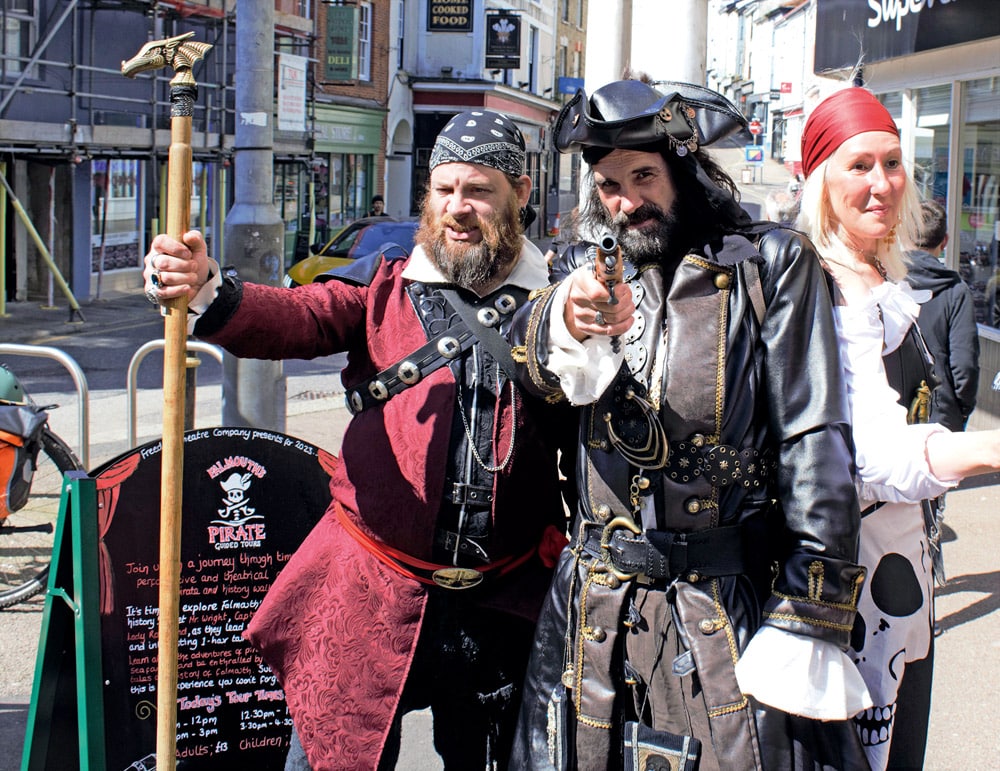
Pirate Captain Neverwrong and his crew add atmosphere and fun to the town.
Seagrass and high voltage
What have Plymouth Gin and seahorses got in common? They both want to preserve the 40 hectares of seagrass in Falmouth Bay. In partnership with Plymouth-based Ocean Conservation, the gin distillery has sponsored mooring buoys to mark these important climate-controlling seagrass meadows in the estuary. Snorkellers may be lucky enough to spot the vibrant pink outcrops of a species of maerle that is unique to the Fal Estuary. Continuing with the theme of green, as river boating edges toward battery power, the harbour aims to stay ahead of the curve with the proposed installation of high-voltage charge points.
Recommended hotels and restaurants

Local fish at INDIdog restaurant
Close to the beach is St Michaels Resort, a lovely beachside luxury hotel with nautically themed rooms and a spa. We found two Beryl e-bikes right outside and whizzed along to the town in just 10 minutes from here.
In terms of the town, the Chain Locker’s boutique rooms, located above the 16th-century pub, offer stunning harbour views. The staff here are very welcoming, and we enjoyed an excellent supper at the pub, which possesses a fantastic atmosphere. Lifeboat photos and old prints of Falmouth adorn its historic walls, adding to this hostelry’s genuine old-world, cosy charm.

